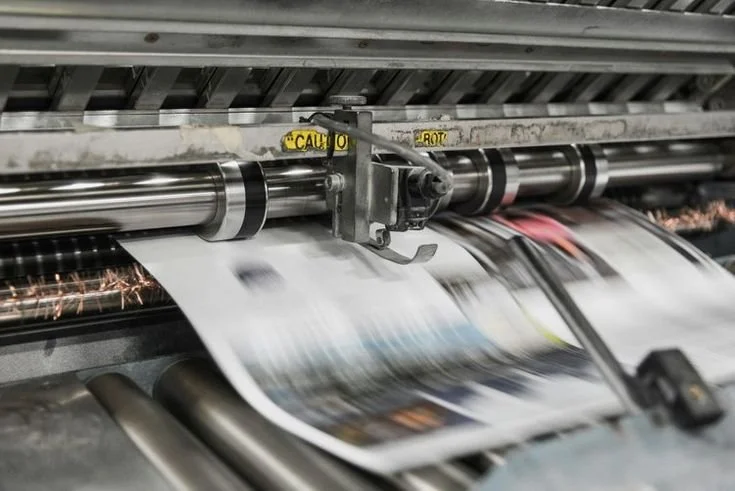C-print vs. Silver gelatin vs. Platinum Print: Understanding the differences
In the realm of fine art photography, the choice of printing method profoundly influences not only the visual impact of an image but also its durability, rarity, and value. Among the most recognized techniques are C-prints (chromogenic prints), silver gelatin prints, and platinum prints. Each process carries a distinctive history, aesthetic, and level of craftsmanship, making it important for both photographers and collectors to understand their differences.
C-Print (Chromogenic Print)
Process: C-prints are created on color photographic paper through a chemical process involving chromogenic dyes. When the paper is exposed to light, it triggers a chemical reaction that produces color dyes, creating the image. This process is typically automated and is standard in both analog and digital photography.
Aesthetic Qualities: C-prints are prized for their vibrant colors and smooth gradations. They can capture a wide range of hues, making them a popular choice for color photography. The glossiness of the paper used for C-prints also contributes to the vividness of the final image.
Durability: While modern C-prints are more stable than earlier color photographs, they are susceptible to fading, especially when exposed to direct sunlight or improper storage conditions.
Why Choose C-Print? Photographers select C-prints primarily for their color quality and the practicality of the printing process. They are ideal for exhibitions, galleries, and commercial work where color accuracy and impact are paramount.
Silver Gelatin Print
Process: The silver gelatin process, prevalent since the late 19th century, involves black-and-white photographic paper coated with a gelatin emulsion containing silver halides. When exposed to light and developed, the silver halides are reduced to metallic silver, forming the image.
Aesthetic Qualities: Silver gelatin prints are lauded for their exceptional sharpness, tonal range, and depth. They offer a rich spectrum of black, white, and gray tones, providing a classic, timeless look.
Durability: When properly processed and cared for, silver gelatin prints can last for a century or more without significant degradation. Their stability and archival qualities have made them the gold standard for black-and-white fine art photography. They are less prone to fading compared to color prints.
Why Choose Silver Gelatin Print? For photographers committed to black-and-white, silver gelatin is often considered the purest and most timeless expression of the medium. They often prefer this type of print for its depth, the subtlety of tones and its long-lasting quality. Collectors value silver gelatin prints for their combination of technical excellence, historical significance, and durability.
Sea-shore Look, British Vogue, July, 1946 | Norman Parkinson
Platinum Print
Process: Platinum printing is a high-end, handcrafted process involving a platinum-based solution that's applied to fine art paper. The image is then developed using a UV light source. The platinum replaces the silver, embedding the image into the paper's fibers rather than sitting on the surface.
Aesthetic Qualities: Platinum prints are renowned for their incredible detail, wide tonal range, and soft gradation between tones. They possess a unique, almost three-dimensional appearance and are not as glossy as silver gelatin prints, offering a more matte finish.
Durability: One of the most durable photographic processes, platinum prints are virtually immune to the fading and deterioration that affect other types of prints. The stability of platinum and its integration into the paper fibers contribute to the print's longevity.
Why Choose Platinum Print? Due to their exquisite detail, tonal quality, and durability, platinum prints are often the choice for collectors and photographers who seek the utmost in print quality and longevity. They are particularly favored for archival, exhibition, or museum-quality prints.
The choice between C-print, silver gelatin, and platinum print depends on the artist’s vision, the desired aesthetic, and the context of presentation. C-prints offer vibrant colors and are suitable for a wide range of applications. Silver gelatin prints provide a classic black and white aesthetic with excellent detail and durability. Platinum prints, while more costly, offer unmatched quality in terms of detail, tonal range, and longevity, appealing to those looking for the pinnacle of photographic art.
For collectors, understanding these differences is essential: each technique tells not only a visual story but also a material one, reflecting artistic intent, historical context, and the enduring power of photography as both art and artifact.
PRINTING AT THE SELECTS GALLERY
The Selects Gallery works closely with each artist to honor their preferred printing method and choice of fine art paper.
Most of our color photography is archival C-print, the most recognized printing method for colorful images. For our black-and-white images, we offer a mix of chromogenic prints, Silver gelatin for its depth, or platinum prints, depending on the artist and the photograph.
We partner with one of the fine art printing houses with the longest history and connection to the photography world and print under the supervision of the photographers and/or their estates. We select high-end papers for their optimal rendering based on the image and mounting choice. Some works are shipped directly by the artist’s studio or estate, and they select the printing house and paper—each decision reinforcing the authenticity and quality of the piece.




